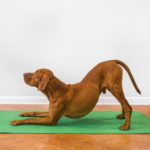When the snow melts, ticks start to emerge in Manitoba. Ticks are little spider-like pests that attach to the skin and feed off blood. Ticks use leaf litter as a hiding spot, as the inner layers of leaf piles stay moist and provide the perfect habitat to thrive. Overgrown grass and dense brush also act as a safe space and as animals like deer, rabbits, and squirrels move through it, ticks attach to them and get transported to other areas. In Manitoba, the black-legged tick (also known as the Deer Tick) risk area extends across most of Southern Manitoba from the Ontario border to the Saskatchewan border, and from the US border to the north of Swan River.
While tick bites do not cause health issues on their own, certain species of ticks are known to transmit diseases, including Lyme disease. It’s important to always check your pets when they come in from the outdoors and remove any ticks as soon as possible to prevent the transmission of disease, as it often takes 36 to 48 hours for the Lime disease bacterium to be transferred. Tick “hot spots” include in your pet’s armpits, as well as in and around the ears.
If a tick is attached to your pet’s skin, it can be safely removed by the following steps:
- Using tweezers, gently grasp its head and mouth parts as close to the skin as possible
- Without squeezing the tick, slowly pull it straight up off the skin…do not jerk or twist it
- DO NOT apply matches, cigarettes, or petroleum jelly to the tick! These methods may actually force the tick deeper into the skin and increase the risk of infection
- Once the tick is removed, clean the area with soap and water, and disinfect it with an antiseptic. Wash your hands with soap and water.
- Save the tick in a clean, empty container. DO NOT add any ventilation holes. You can put more than one tick in the container if they are found on the same animal or in the same general area in the environment
- Add a small piece of lightly moistened tissue or cotton ball into the container to prevent the tick(s) form drying out
- Call your vet to get instructions on how to submit a tick for testing, and make an appointment to get your pet checked for tick-borne disease, as well as determine a plan to protect your pet against tick-borne illness.
Last modified: October 7, 2023



